Easy to Make Cannon Shoots Foam Balls
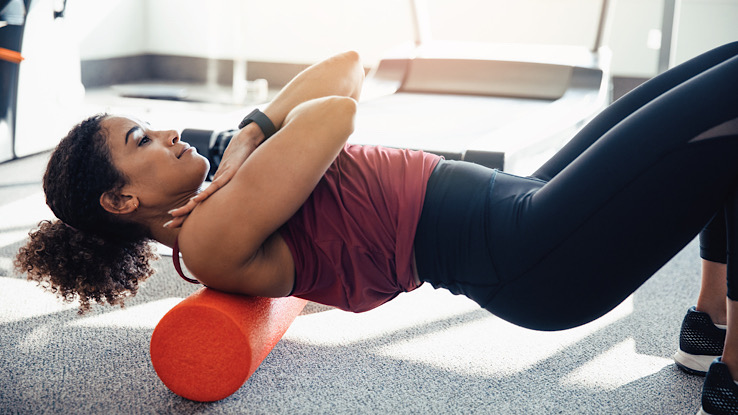
As of 2021, there are over 201,000 fitness clubs globally, and we expect this number to continue to grow. And as more people dive into the world of fitness, muscle recovery has become a very important subject.
So, how do you incorporate muscle recovery into your exercise regimen? Which tools help best with the process of muscle recovery? Here, we'll answer all your burning questions so you can soothe those burning muscles in the best way for you.
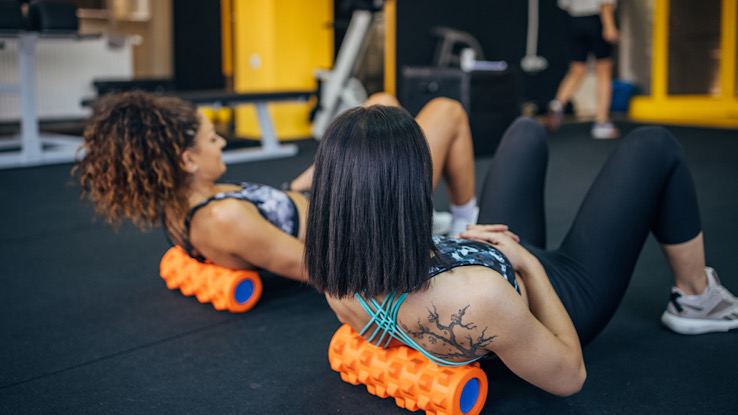
A foam roller is a cylindrical-shaped product made of dense foam. It usually comes in a range of sizes, shapes, and levels of firmness. Often, you'll see a few main types: smooth rollers, textured rollers, foam-covered massage sticks, and foam massage balls.
Foam rolling, a self-myofascial release (SMR) technique, reduces soreness, muscle tightness, and inflammation, all while helping to increase your joints' range of motion. Adding a foam roller to your warm-up or cool-down regimen can be incredibly beneficial.
In general, foam rolling is a very safe practice. It is, therefore, a good option to try if you have muscle soreness after exercise.
However, if you have a serious injury, such as a muscle break or tear, you should consult your physical therapist or doctor before using a foam roller. It would help if you also avoided foam rolling over small joints, such as your ankles, knees, and elbows. These small joints are at particular risk for hyperextension and, as a result, damage. So, when foam rolling your legs, roll out your calves first, then roll out your quads separately. If you're new to exercise, working with a physical therapist is best to learn how to engage in exercise and muscle recovery safely.
Massage Balls for Muscle Recovery
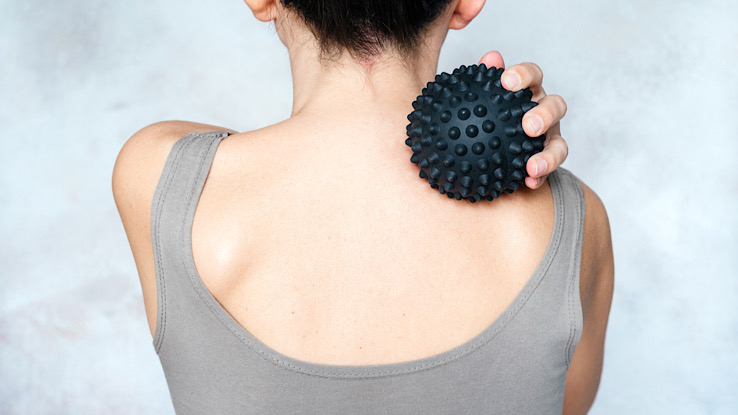
Massage balls relieve tension in your muscles, whether sitting for a long time in the office or just finishing up a workout. The difference between this and a foam roller is that this can get harder-to-reach areas, such as your upper back, feet, and buttocks.
The massage ball can deal with trigger points or knots that cause muscle pain. You can carry it around easily, since it is small.
As you may have guessed, there are different types of massage balls. Generally, there are smooth and firm balls, like a lacrosse ball, or small and soft balls, like a squash ball. You can also use a tennis ball or a spiky massage ball. Research has shown that a moderately firm massage ball is better than a hard massage ball.
Since massage balls are easy to use and don't require a helping hand, they're great in a pinch. Plus, you can use a massage ball against the wall, the back of a chair, or on the floor. You can also just apply pressure with your hands. When using a massage ball, make sure you start with the most painful knot first. The idea is to place the ball on the painful knot and slowly apply gentle to medium pressure until the muscle tension has faded. If you cannot work directly with a physical therapist to establish massage ball therapy exercises, you can watch instructional videos made by physical therapists to help direct your therapy.
Yoga Wheels for Muscle Recovery
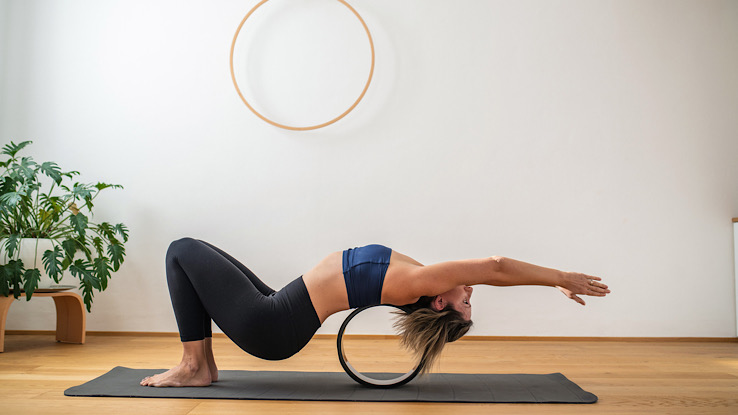
The yoga wheel was initially intended to strengthen yoga practice for novice and well-trained yogis. However, yoga practitioners have learned that the tool can also release pressure off your spine while massaging the back. Plus, it can help to improve your posture. But anyone with a history of back or spine problems should consult a doctor before trying this exercise since it can put your back into hyperextension.
Yoga wheels come with a roller in either small, medium, or large sizes; generally, the wheel can withstand up to 500 lbs of weight. The small wheel is used to massage targeted areas, while the medium is for toning exercises. Finally, the large wheel is used in exercises aimed at boosting balance.
Aside from its varied uses, the yoga wheel is also light; weighing about 4 lbs, it's an incredibly convenient tool. The wheel's versatility also means there are different techniques for all types of needs, including shoulder and upper-back exercises, chest exercises, back exercises, and leg and hip exercises.
Massage Stick or Rolling Pin for Muscle Recovery
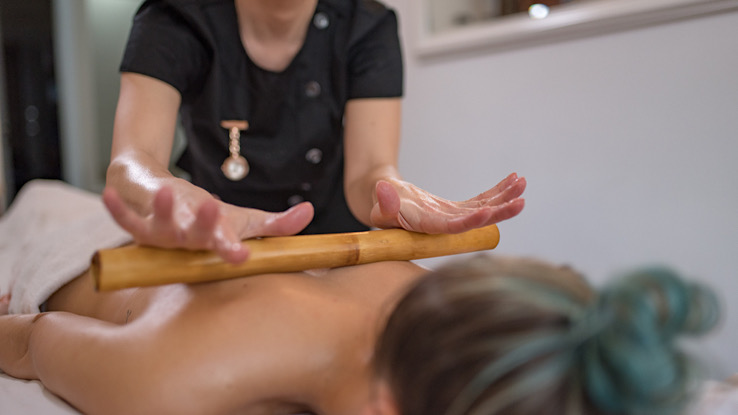
The manual massage stick gives you more control over the rolling technique than a massage ball. Therefore, some people prefer massage sticks when targeting specific muscle areas. Using a massage stick is also relatively easy; just roll it over your sore, tight muscles to reduce tension and aid in the recovery process.
You also have the flexibility of manipulating the amount of pressure you apply to meet your needs (and pain tolerance). Massage sticks help improve tissue elasticity; break down scar tissue from previous trauma or injuries, and increase the range of motion in your joints.
Want to take your recovery up a notch? When "trigger pointing" — targeting very specific areas — use the end of the massage stick for a more precise experience. If you don't have a massage stick handy, you can use a kitchen rolling pin instead. Just make sure you wrap this inexpensive alternative in dish towels for a less intense roll.
Theragun for Muscle Recovery
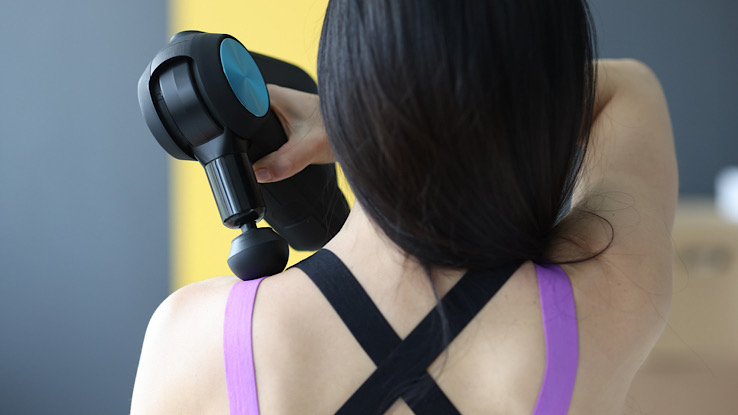
The Theragun is a more advanced muscle recovery tool. This form of massage therapy uses percussive massage therapy to soothe your muscles. The electronic massage device strikes muscle tissue rapidly, which, in turn, increases blood flow. This process hastens muscle recovery, relieves pain, and improves your joints' range of motion.
The rapid strikes also release the knots deep within your muscles. Theragun therapy helps you recover faster post-workout, but it's also recommended for people sensitive to deep-tissue massages. This device can achieve the same results as a deep-tissue massage without applying painful or uncomfortable pressure.
Sounds great, right? Well, the Theragun is not an inexpensive device — unlike that kitchen rolling pin or tennis ball. A Theragun can run cost over $200.
Summary of Muscle Recovery Therapy
The bottom line? No matter which method you choose, it's clear that muscle recovery is a core part of any fitness regimen. Stretching and massaging your muscles using any of these methods described here is a great addition to your new exercise regimen. When you incorporate muscle recovery therapy, you'll find that your muscles recover faster and you make bigger gains in your fitness journey. Remember: before trying any of these methods or tools, make sure that you don't have a serious injury or form of chronic pain that needs the attention of a doctor or physical therapist. And if you're new to exercise, be sure to check in with your doctor to make sure there aren't any limitations or precautions you should be aware of, based on your own health status.
Resource Links:
- "19+ statistics and facts about the fitness industry (2022)" via PolicyAdvice
- "Exploring the science of recovery" via National Academy of Sports Medicine
- "Fascia rolling for myofascial release: does it really work?" via Stronglife Chiropractic and Physical Therapy
- "Effectiveness of myofascial release: systematic review of randomized controlled trials" via Journal of Bodywork and Movement Therapies
- "7 foam rolling exercises your body is begging you to do" via Women's Health
- "Trigger points can affect nearly everyone" via The Physio Company
- "Tennis ball massage for myofascial trigger points" via PainScience.com
- "Massage: Comparing the Immediate Post-Treatment Effects Between an Instructional Video and a Self-Preferred Program Using Two Different Density-Type Roller Balls." via Journal Human Kinetics
- "How to use a spikey massage ball and a trigger point" via Maroubra Dynamic Physiotherapy
- "Best dharma yoga wheel prop for stretching and back pain" via SF Weekly
- "At home massage tools: the rolling pin for self-massage" via Moyer Total Wellness
- "What is percussion therapy? Here's the deep (tissue) dive" via Greatist
- "The Acute Effects of a Percussive Massage Treatment with a Hypervolt Device on Plantar Flexor Muscles' Range of Motion and Performance" via Journal of Sports Science & Medicine
- "An Evidence-Based Approach for Choosing Post-exercise Recovery Techniques to Reduce Markers of Muscle Damage, Soreness, Fatigue, and Inflammation: A Systematic Review With Meta-Analysis" via Frontiers in Physiology
Source: https://www.symptomfind.com/fitness-exercise/can-foam-rollers-and-massage-balls-really-help-with-muscle-recovery?utm_content=params%3Ao%3D740013%26ad%3DdirN%26qo%3DserpIndex&ueid=206f49cd-5ae1-48cf-ae35-de9f29eb5bcc
0 Response to "Easy to Make Cannon Shoots Foam Balls"
Post a Comment